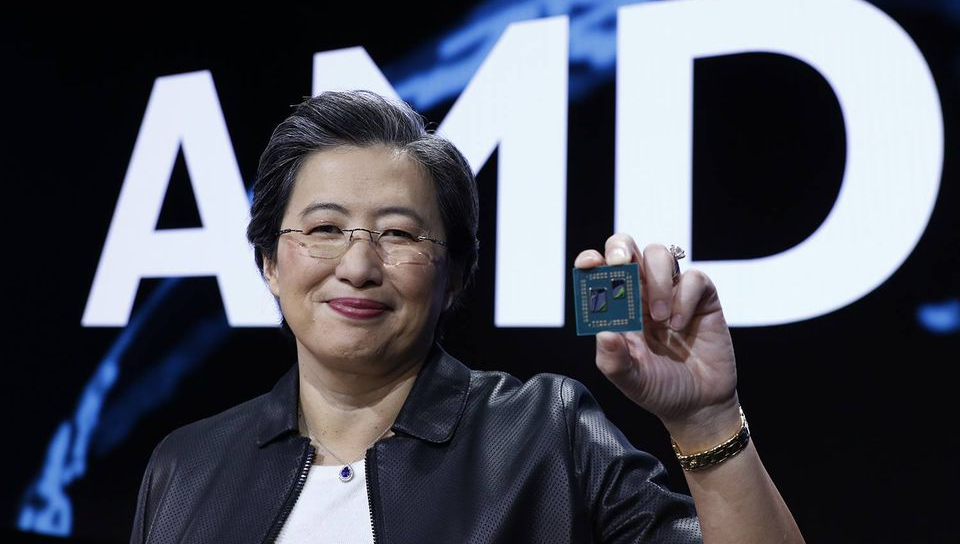 APPS
APPS
 APPS
APPS
 APPS
APPS
Advanced Micro Devices Inc. has introduced a new line of personal computer processors, the Ryzen 7000 series, that features significant performance improvements and built-in machine learning capabilities.
AMD Chief Executive Officer Lisa Su (pictured) detailed the Ryzen 7000 series today at Computex 2022. The executive also previewed a new processing core architecture, the Zen 4, that will power the central processing unit series.
“With our upcoming AMD Ryzen 7000 Series desktop processors, we will bring even more leadership to the desktop market with our next-generation 5nm ‘Zen 4’ architecture and provide an unparalleled, high-performance computing experience for gamers and creators,” Su said in a statement.
According to AMD, Ryzen 7000 central processing units will be capable of achieving a clock rate as high as 5.5 gigahertz. That matches the maximum clock rate of the Core i9-12900KS processor from Intel Corp., which was touted at the time of its announcement this past March as the world’s fastest processor. AMD said the most advanced Ryzen 7000 CPUs will ship with 16 cores, the same number as Intel’s Core i9-12900KS.
The cores in the Ryzen 7000 series are based on AMD’s new Zen 4 chip architecture, which also made its debut at Computex. AMD didn’t share many technical details about the architecture at the event. However, the company did disclose that Zen 4 will provide a more than 15% improvement in single-threaded performance compared with previous-generation silicon.
AMD will produce Zen 4 cores using TSMC Co. Ltd.’s five-nanometer manufacturing process. Apple Inc. has been using the same manufacturing process to make the chips that power its iPhones. According to AMD, the Ryzen 7000 is the first processor series in the PC market that is based on five-nanometer technology.
Five-nanometer transistors are more compact than previous-generation silicon, which means that more of them can be placed on a chip. The more transistors there are in a chip, the more processing capacity it provides. The five-nanometer process also makes it possible to create processors that are more power-efficient than earlier silicon.
Historically, AMD and other chipmakers manufactured processors as a single block of silicon known as a die. With the Ryzen 7000 series, however, the company has taken a different approach. A Ryzen 7000 processor is not produced as a single die, but rather comprises three different chip modules called chiplets that are linked together after manufacturing.
This modular approach to semiconductor production has gained traction in recent years because it provides certain manufacturing benefits. Usually, if one section of a processor is manufactured incorrectly, the entire processor has to be discarded. But if a processor is made of multiple, separate chiplets and one of them contains a fault, then only the affected chiplet must be discarded and the rest can still be used, which reduces costs.
Two of the three chiplets that comprise a Ryzen 7000 processor house AMD’s new five-nanometer Zen 4 cores. The third chiplet contains a set of supporting components made using a different, six-nanometer manufacturing process.
According to AMD, the third chiplet includes circuitry for managing CPU data input and out operations. It also features an integrated graphics processing unit based on the RDNA 2 architecture that powers AMD’s standalone graphics cards. RDNA 2 offer specialized performance optimizations, as well as 30% higher power efficiency per clock cycle per compute unit than AMD’s previous-generation GPU architecture.
The chiplet housing the GPU circuits also includes other components, including the CPU power management module. The fact that the chiplet is based on a six-nanometer process is expected to make it faster than the comparable chiplet in AMD’s current CPUs, which is based on an earlier 14-nanometer manufacturing process.
The Ryzen 7000 series also introduces other improvements. AMD has extended the CPUs’ instruction set, the machine language that a processor uses to carry out computations, with instructions optimized for artificial intelligence tasks. Additionally, the company equipped each Zen 4 core with a one-megabyte L2 cache that provides twice the capacity of AMD’s previous-generation L2 cache. The cache is used to store data that a CPU is processing.
CPUs in the Ryzen 7000 series will provide support for the latest version of the PCIe standard. PCIe is a technology used to connect a CPU with other components on a computer’s motherboard, such as flash drives and GPUs. There’s also support for DDR5 memory chips, which have started becoming available in recent years and are faster than the DDR4 memory that ships with most PCs.
Ryzen 7000 processors are expected to become available in the fourth quarter. The CPUs won’t support existing motherboards, but will rather have to be used with a new generation of motherboards being rolled out in conjunction. The new hardware includes several new features including PCIe 5.0 NVMe, which will make it possible for Ryzen 7000 processors to retrieve data from a PC’s flash storage faster and thus speed up applications.
Support our mission to keep content open and free by engaging with theCUBE community. Join theCUBE’s Alumni Trust Network, where technology leaders connect, share intelligence and create opportunities.
Founded by tech visionaries John Furrier and Dave Vellante, SiliconANGLE Media has built a dynamic ecosystem of industry-leading digital media brands that reach 15+ million elite tech professionals. Our new proprietary theCUBE AI Video Cloud is breaking ground in audience interaction, leveraging theCUBEai.com neural network to help technology companies make data-driven decisions and stay at the forefront of industry conversations.